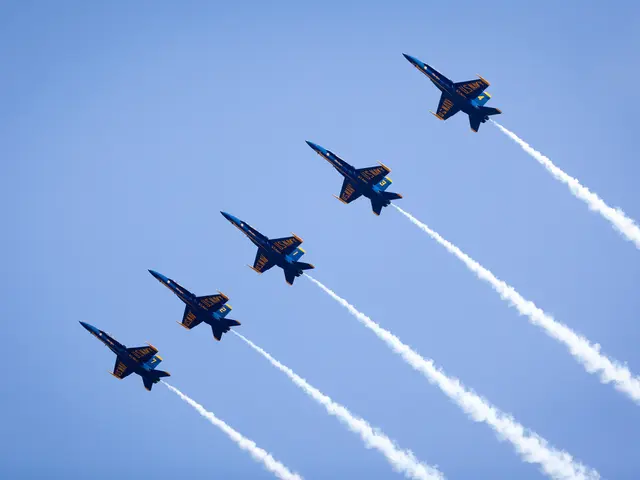Emerging Artificial Intelligence could potentially expose undetected submarines, simplifying detection, according to Chinese analysts.
In a significant development in naval warfare, the China Helicopter Research and Development Institute has developed an AI-driven Anti-Submarine Warfare (ASW) system. This cutting-edge technology is designed to detect and track even the quietest submarines, potentially reducing a submarine's chances of escaping detection to just 5 percent.
The ASW system operates on a three-layer structure: perception, decision-making, and human-machine interaction. It maintains an overall success rate of around 95 percent, a testament to its efficiency and reliability.
The system's AI capabilities are impressive, capable of rapidly determining where to search, how to configure its sensors, and how to respond when a submarine attempts evasive maneuvers such as zigzagging, going silent, or deploying decoys.
In computer simulations, the AI has demonstrated its prowess, successfully locating and tracking enemy submarines about 95 percent of the time, regardless of how skillfully they tried to hide. The AI first fuses data from sonar, radar, magnetic anomaly detectors, and oceanographic sensors to create a real-time picture of the undersea environment, accounting for variables like temperature, salinity, and background noise.
Large language model-based interfaces have been created to help human operators manage multiple AI agents, translating complex sensor data and algorithmic strategies into plain-language recommendations. In essence, the AI functions like an intelligent commander at sea, combining data from various sources to create a real-time, comprehensive picture of underwater activity.
Looking ahead, future iterations of the system could be paired with aerial drones, surface ships, and unmanned underwater vehicles to form a fully integrated three-dimensional hunting network. This development could potentially make traditional submarine stealth strategies less effective against AI-enhanced naval technologies.
Meanwhile, the US Navy argues that its fleet of nuclear submarines serves as a crucial deterrent against the rapidly expanding People's Liberation Army Navy (PLA Navy) in any potential future conflict. As of mid-2025, open sources indicate the US operates around 70 nuclear-powered submarines, which can blend into the ocean's background noise and deploy advanced drones designed to confuse and distract enemy tracking systems.
However, the development of the AI-driven ASW system could tip the balance in favour of the PLA Navy, making underwater warfare a more challenging and unpredictable arena. The study, published in the journal Electronics Optics & Control in August, suggests that this system can make intelligent, real-time decisions, raising questions about the future of naval warfare and the need for continued innovation and adaptation.
Despite the significant advancements in AI technology, the name of the leader of the Chinese research team that developed the AI-assisted ASW system remains undisclosed. The study marks a milestone in the field of AI and naval warfare, signalling a new era of intelligent, autonomous naval systems.
Read also:
- MRI Scans in Epilepsy Diagnosis: Function and Revealed Findings
- Hematology specialist and anemia treatment: The role of a hematologist in managing anemia conditions
- Enhancing the framework or setup for efficient operation and growth
- Hydroelectric Power Generation Industry Forecasted to Expand to USD 413.3 Billion by 2034, Projected Growth Rate of 5.8% Compound Annual Growth Rate (CAGR)








